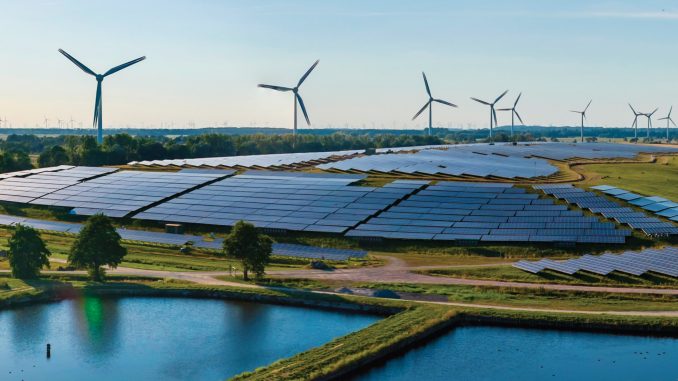
To achieve its goal of reaching net zero emissions by 2070 and producing 50 percent of its electricity requirements from renewable energy sources by 2030, India is rapidly progressing towards renewables, primarily solar and wind.
India now ranks fourth in renewable energy capacity in the world scaling up its renewable energy capacity by 250 percent between 2014 and 2021.
The country is further embarking on a sweeping energy transition effort to replace fossil fuel use in the industrial and other sectors.
According to a new joint report produced by two of the foremost international energy and finance think-tanks, IEEFA and Ember, two Indian states– Gujarat and Karnataka– are leading the country’s race towards renewables.
Karnataka and Gujarat, the top performers in 2023, again in 2024 showcased strong performance across dimensions, effectively integrating renewable energy sources into their power sectors, making strong strides in decarbonisation.
However, progress in states like Jharkhand, Bihar, West Bengal and Uttar Pradesh needs to improve, similar to last year’s findings, according to the report.
The report added that these states need to focus on increasing renewable energy deployment, enhancing short term market participation and strengthening their distribution companies, as they are in the early stages of their transition into renewables.
Several states are exhibiting preparedness to embrace electricity transition, and they perform well in the readiness and performance of the power ecosystem and market enablers dimensions but need to improve in the Decarbonisation dimension, as per experts’ analysis mentioned in the report.
The country is pursuing its transition towards renewables in various sectors, including electricity, industry, transport, agriculture and cooking.
This energy transition is a huge economic opportunity for India, and the country is particularly well placed to become a global leader in producing renewable energy.
Low-carbon technologies could create a market worth up to $80 billion in India by 2030, reports said.
According to the International Energy Agency (IEA), a Paris-based autonomous intergovernmental organisation that provides policy recommendations, analysis and data on the global energy sector, to reach net zero emissions by 2070, $160 billion per year is needed, on average, across India’s energy economy between now and 2030.
India’s goal is not just to reduce greenhouse gas emissions to achieve net zero, the country aims to benefit its citizens with the transition, and India’s well-designed policies can limit the potential trade-offs between affordability, security and sustainability.
The IEA said in its report that green hydrogen will play a major role in achieving net zero and decarbonising the hard-to-abate sectors.
India has a goal of becoming a global hub for green hydrogen production and exports, and the country could easily create 5 million tonne green hydrogen demand thereby replacing grey hydrogen in the refineries and fertiliser sector, reports said.
On the other hand, India’s solar power installation capacity has been growing every year.
According to the Ministry of New and Renewable Energy, solar power installed capacity in the country has reached around 73.31 GW as of December 2023, and in terms of total solar capacity, Rajasthan is at the top with 18.7 GW, while Gujarat is at the second position with 10.5 GW.
The total rooftop solar installed capacity of India is around 11.08 GW as of December last year.
Gujarat tops the list with 2.8 GW, followed by Maharashtra by 1.7 GW.
A recent report by Council on Energy, Environment and Water (CEEW) stated that only 20 percent of rooftop solar capacity installations are in the residential sector, with the majority in commercial and industrial sectors.
The CEEW report suggests that 25 crore households in India could deploy 637 GW of solar energy on rooftops, and just one-third of this could meet the entire residential electricity demand in the country.
However, the joint report by IEEFA and Ember has recognised the considerable efforts that the Indian states are making towards transitioning to clean energy and recommended strengthening state-level regulatory ecosystems to accelerate the pace of transition, ensure compliance, promote growth, data tracking and monitoring, and to set up a conducive environment for business.
Lauding the policies adopted by India that balance economic growth and the country’s long-term climate action plan, the Economic Review, in its chapter on India’s climate action, highlighted the government’s achievement in placing developmental priorities at the core of its energy transition efforts.















